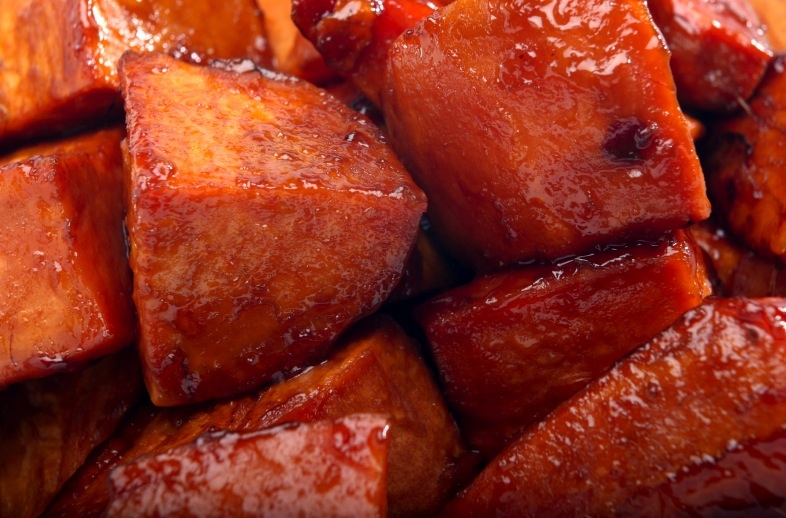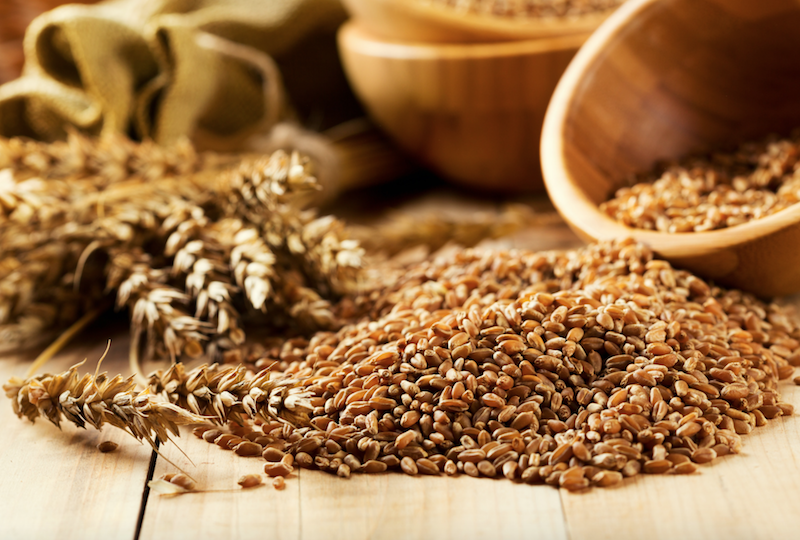A few years back one of my clients asked if it were possible to cook candied sweet potatoes in a “healthy” way? I chuckled a little at first, as the words “candied” and “healthy” generally contradict each other. But, after having heard her usual recipe, roughly comprised of “ten or so cups of sugar” and multiple sticks of butter in one of those full size deep table pans, I realized her question was asked with good reason.
Related Article: Dietary Sugar: The Good, The Bad and The Unnecessary
Unfortunately, this woman is not at all alone, as many people have been raised to believe that candied sweet potatoes should be prepared this way, touting they only eat them 2 or 3 times a year as an excuse for indulging. Holiday or not, if you’re one who follows the pattern of concocting butter-rich, overly sweetened candied sweet potatoes, doing so can put a real hurting on your calorie budget and ultimately your health.
Luckily, if you love the rich, syrupy flavor of candied sweet potatoes, there are healthier ways to prepare this delectable side dish without losing the taste you so enjoy. Here’s how you do it.
Related Article: Five Tips For Preventing Holiday Weight Gain
Include Spices for Natural Sweetness with a Health Boost
You can substantially boost the flavor and overall nutritional value of sweet potatoes by adding generous amounts of naturally sweet spices to the mix. Tasty options that are virtually calorie-free include nutmeg, cinnamon, and vanilla. Traditionally used in candied sweet potato recipes, nutmeg is a potent source of flavonoid antioxidants.
Regular intake of flavonoids has been proven effective in both the prevention and treatment of heart disease, cancer, and inflammatory disorders.
And then there’s sweet and spicy cinnamon, which has been shown to beneficially alter blood cholesterol levels, promote heart health, and improve blood sugar control. In addition, you can obtain nearly 50% of a day’s worth of manganese in just two teaspoons of this delicious spice. Manganese plays a critical role in macronutrient metabolism and calcium absorption.
Related Article: Macronutrients: Three Key Essentials of Healthy Eating
Finally, when it comes to sweet potato spices, vanilla extract is indeed the icing on the cake. Now, I’m talking about “pure” vanilla extract, not the “imitation” versions you’ve likely used before. Pure vanilla extract contains a compound called vanillin that possesses powerful antioxidant properties.
Interestingly, evidence suggests that regular consumption of vanilla extract can effectively treat numerous illnesses including inflammatory bowel disease, sickle cell anemia, and even chronic depression.
Try a Little Pure Maple Syrup in Place of Refined Sugars
To preserve the nutritional quality of sweet potatoes, use pure maple syrup instead of white and brown sugars, as both are refined and just plain ole bad for you. For a rich, syrupy sauce that’s characteristic of candied sweet potatoes, blend your maple syrup with extra virgin olive oil in place of butter and add the zest and juice of oranges to the mix.
You can also use pure honey or agave nectar instead of maple syrup if you’d like, as both make great alternatives to refined sugars.
In and of itself, pure maple syrup contains large amounts of health-promoting phytochemicals including lignans and coumarins. Lignans are estrogen-like chemicals (phytoestrogens) that help fight cancers of the breast, prostate, colon, and skin while coumarins have been shown to protect against heart disease, high blood pressure, and even migraines.
Maple syrup is also a valuable source of manganese and a decent source of the antioxidant mineral zinc.
Related Article: Effective Strategies for Avoiding Hypertension
Select Your Sweet Potatoes Wisely
Sweet potatoes are generally rich in micronutrients, antioxidants, and dietary fiber but they’re not all created equal, particular when it comes to candying. While some have soft, reddish-orange skin and orange-tinted flesh, others are yellow-fleshed with firmer, yellowish skin. Now, many people opt for yellow-fleshed sweet potatoes, as they cost less and are usually larger in size.
However, these potatoes are also starchier, dryer, and less sweet than orange-fleshed sweet potatoes so you’ll often have to add tons of butter and sugar in order to “candy” them.
Related Article: Micronutrients: The Nutritional Building Blocks for Good Health
While relatively pricier, orange-fleshed varieties are naturally sweet with a softer texture making them most ideal if you really like the taste of candied sweet potatoes. In addition, since they liquefy easily due to their high moisture content, baking them in the spices and seasonings I’ve discussed produces a natural syrup that’s incredibly sweet. You don’t even need to add water!
In addition to their superior cooking qualities, orange-fleshed sweet potatoes house over 250% of a day’s worth of vitamin A in the form of beta-carotene, which is nearly equivalent to that of a carrot.
Now, if you’re still intent on eating buttery, sugary versions of candied sweet potatoes, I advise you to treat them as dessert rather than a side dish because they’re not at all healthy. Still, with all the cookies, cakes, and pies that surround us day in and day out, why add sweet potatoes to the dessert list?
By incorporating these simple strategies for making candied sweet potatoes, you’ll be able to eat them freely throughout the year without an ounce of guilt!







